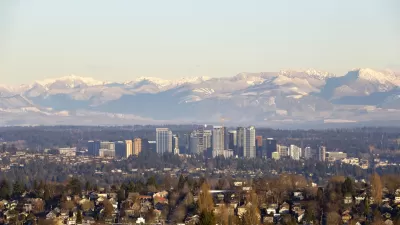More and more people working in the San Francisco Bay Area are opting for cheaper housing outside the region. Some are going way outside the region, commuting by airplane from Portland or Seattle.
This piece from The Wall Street Journal looks at the increasing trend of extreme commuters in the San Francisco Bay Area, and the economic realities that drive people to commute via airplane from the Pacific Northwest
"There has been a northward migration for years by Bay Area residents looking for everything from affordable real estate to better public schools. But moving usually meant giving up their jobs, which are generally more lucrative and plentiful here than in the Pacific Northwest, especially for technology workers.
Now it is getting more practical for people to live in the Pacific Northwest and continue working for Bay Area-based companies, as more employers loosen their telecommuting policies. Technology also is making it easier to stay connected all the time, and travel between San Francisco and cities to the north has become more convenient, though hard data on Bay Area transplants to the Northwest who retain their local jobs are hard to come by."
FULL STORY: The New Suburbs, a Plane Ride Away

Trump Administration Could Effectively End Housing Voucher Program
Federal officials are eyeing major cuts to the Section 8 program that helps millions of low-income households pay rent.

Planetizen Federal Action Tracker
A weekly monitor of how Trump’s orders and actions are impacting planners and planning in America.

Ken Jennings Launches Transit Web Series
The Jeopardy champ wants you to ride public transit.

Washington Legislature Passes Rent Increase Cap
A bill that caps rent increases at 7 percent plus inflation is headed to the governor’s desk.

From Planning to Action: How LA County Is Rethinking Climate Resilience
Chief Sustainability Officer Rita Kampalath outlines the County’s shift from planning to implementation in its climate resilience efforts, emphasizing cross-departmental coordination, updated recovery strategies, and the need for flexible funding.

New Mexico Aging Department Commits to Helping Seniors Age ‘In Place’ and ‘Autonomously’ in New Draft Plan
As New Mexico’s population of seniors continues to grow, the state’s aging department is proposing expanded initiatives to help seniors maintain their autonomy while also supporting family caregivers.
Urban Design for Planners 1: Software Tools
This six-course series explores essential urban design concepts using open source software and equips planners with the tools they need to participate fully in the urban design process.
Planning for Universal Design
Learn the tools for implementing Universal Design in planning regulations.
Heyer Gruel & Associates PA
Ada County Highway District
Institute for Housing and Urban Development Studies (IHS)
City of Grandview
Harvard GSD Executive Education
Toledo-Lucas County Plan Commissions
Salt Lake City
NYU Wagner Graduate School of Public Service




























